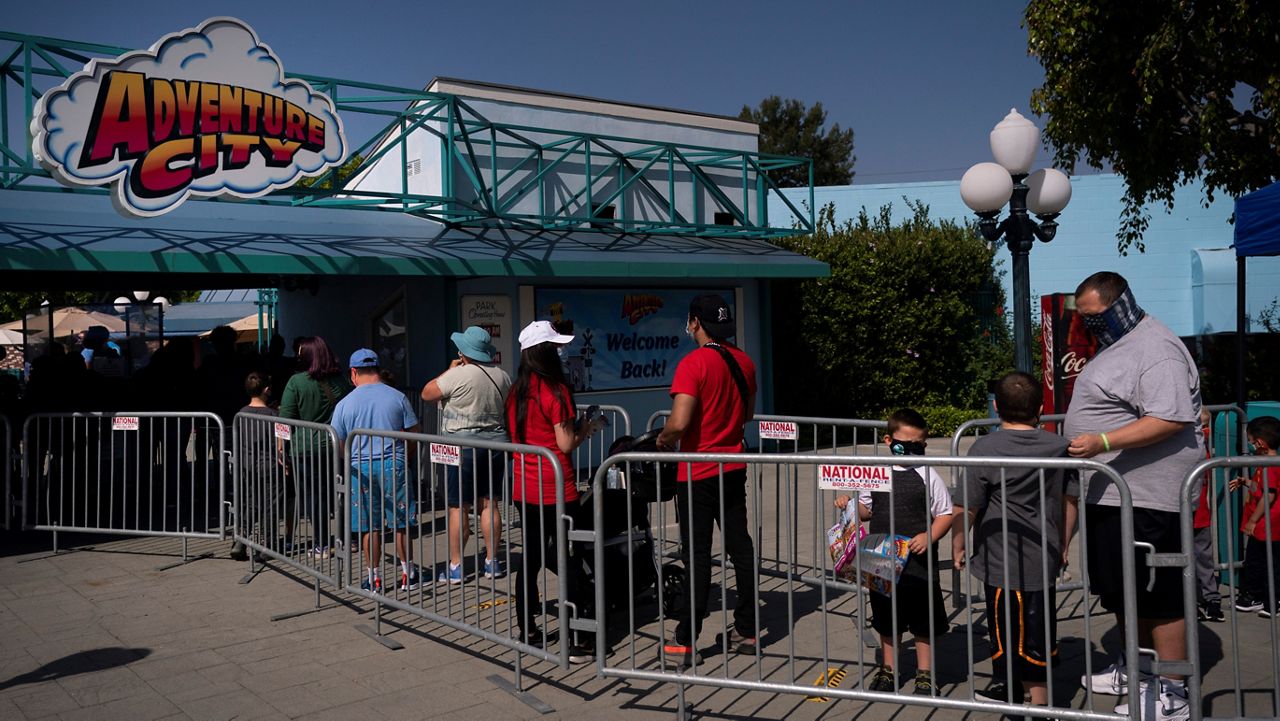SANTA ANA, Calif. (CNS) — Orange County Thursday reported just 43 new COVID-19 cases and logged four more fatalities, including one that happened in December, as hospitalization rates inched downward.
The new cases Wednesday pushed the county's total to 253,780 since the pandemic began, while the death toll rose to 4,948.
The number of COVID-19 patients in county hospitals decreased from 125 Wednesday to 116 Thursday, while the number of intensive care unit patients increased from 24 to 25.
"We had pretty good numbers again today," Orange County Board Vice Chairman Doug Chaffee told City News Service on Thursday. "You never know what tomorrow will bring, but looking good."
The 43 cases reported "is as low as I can remember in a long time," Chaffee said.
Orange County's weekly averages for COVID-19 metrics, which are released on Tuesdays, kept it in the orange tier of the state's economic reopening system, although it meets two of three categories for the least-restrictive yellow tier, according to most recent figures.
The county's weekly averages for adjusted daily case rate per 100,000 residents improved from 2.8 last Tuesday to 2.6.
The overall test positivity rate remained at 1.4%. The county's Health Equity Quartile rate, which measures positivity in hotspots in disadvantaged communities, increased from 1.7% to 1.9%.
The county's positivity rates qualify for the yellow tier, but the case counts are still in the orange tier.
A graduation into the yellow tier requires that the case rate must get below 2 per 100,000 people. A county must maintain metrics for a tier for two weeks before graduating to a less-restrictive level.
"One thing for concern is the number of people who are hospitalized now seem to be younger and that is across the state as well," Dr. Clayton Chau, the county's chief public health officer and director of the Orange County Health Care Agency, told the Board of Supervisors at their regular meeting Tuesday.
"That's because we've done quite well in vaccinating our most vulnerable victims age 65 and older," Chau said. As of April 18, the county had vaccinated 80% of its residents in that age group, he said.
Chaffee told CNS that "it's easy right now to get an appointment (for inoculation) through Othena," the county's app.
"You could sign up today and get a new appointment within a few days and get a shot at one of our super PODS," Chaffee said.
The county is continuing its efforts to bring mobile clinics to various neighborhoods such as one scheduled for Saturday evening at a mosque in Garden Grove, Chaffee said.
Chaffee said it is too soon to see if vaccine reticence will play a role in the county's efforts to achieve herd immunity. That may not be more apparent for another two weeks, he said.
"Right now, we still don't have enough vaccine to give everyone who wants a shot a shot," Chaffee said.
The mobile clinics are vaccinating about 3,000 daily in the county, Chaffee said.
The county has dispensed 2.57 million doses of vaccines with 978,000 people considered fully vaccinated, Chau said. About 1.9 million people have received their first dose, Chau said.
The county continues to test at about the state average, Chau said. The county's average this week is 308.8 per 100,000 residents. The county received 12,616 tests on Thursday, raising the total to 3,646,290.
Chau said the county is expecting to receive 22% fewer vaccines in the next two to three weeks. It is not certain why that is, but Chau said it probably has to do with the pause in distribution of the Johnson & Johnson vaccine, which was lifted on Friday, while officials studied blood-clotting issues to about 15 people out of 8 million recipients.
Bartlett said it appears the county needs to vaccinate 740,000 more residents, "which is a lot," before the county can achieve herd immunity.
Chau admitted some anxiety about reaching herd immunity in time for a mid-June goal due to the declining allocation of vaccines.
The four fatalities logged Thursday raised the death toll so far for April to 14. The death toll for February increased by one to 584.
The death toll in March is 177, 1,517 in January, the deadliest month in the pandemic. December, the next deadliest, saw its death toll rise by one on Thursday to 940.



